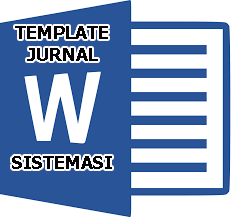A Comparative Study of K-Means, Gaussian Mixture Model, and Spectral Clustering for Facial Emotion Recognition
Abstract
Keywords
Full Text:
PDFReferences
B. R. Delazeri, L. L. Vera, J. P. Barddal, A. L. Koerich, and S. B. Alceu De, “Evaluation of Self-Taught Learning-based Representations for Facial Emotion Recognition,” Proc. Int. Jt. Conf. Neural Networks, Vol. 2022-July, No. ii, 2022, DOI: 10.1109/IJCNN55064.2022.9891956.
Q. Li et al., “Optimizing Class Imbalance in Facial Expression Recognition using Dynamic Intra-Class Clustering,” Biomimetics, Vol. 10, No. 5, pp. 1–19, 2025, DOI: 10.3390/biomimetics10050296.
N. K. Zuhal, D. P. Pamungkas, and R. Wulaningrum, “Klasifikasi Emosi pada Wajah dengan menggunakan K-MEANS Clustering dan KDEF,” Pros. SEMNAS INOTEK (Seminar Nas. Inov. Teknol., Vol. 5, No. 1, pp. 243–248, 2021.
A. M. Betru, T. M. D. Tran, and W. Ectors, “Automating Composition of Origin-Destination Flows of Intersections based on UAV Data,” Procedia Comput. Sci., Vol. 257, pp. 233–240, 2025, DOI: 10.1016/j.procs.2025.03.032.
C. Shen, L. Qian, and N. Yu, “Adaptive Facial Imagery Clustering via Spectral Clustering and Reinforcement Learning,” Appl. Sci., Vol. 11, No. 17, 2021, DOI: 10.3390/app11178051.
M. Piao Tan and C. A. Floudas, “Determining the Optimal Number of Clusters,” Encycl. Optim., Vol. 1, pp. 687–694, 2008, DOI: 10.1007/978-0-387-74759-0_123.
H. Hendrik, K. Kusrini, and K. Kusnawi, “Optimasi Penentuan Sentroid Awal pada K-Means untuk Meningkatkan Hasil Evaluasi Davies-Bouldin Index,” J. Inform. Teknol. dan Sains, Vol. 6, No. 1, pp. 52–57, 2024, DOI: 10.51401/jinteks.v6i1.3873.
V. I. Agughasi and M. Srinivasiah, “Semi-Supervised Labelling of Chest X-Ray Images using Unsupervised Clustering for Ground-Truth Generation,” Appl. Eng. Technol., Vol. 2, No. 3, pp. 188–202, 2023, DOI: 10.31763/aet.v2i3.1143.
F. A. G. Zhafirah, R. Rokhana, R. Sigit, and B. S. B. Dewantara, “Fusi Algoritma K-Means dan CNN untuk Klasifikasi Emosi pada Anak,” Techno.Com, Vol. 22, No. 3, pp. 622–634, 2023, DOI: 10.33633/tc.v22i3.8667.
D. Evangeline and A. Parkavi, “Facial Emotion Recognition of Online Learners using a Hybrid Deep Learning Model,” Int. J. Intell. Eng. Syst., Vol. 17, No. 6, pp. 735–751, 2024, DOI: 10.22266/ijies2024.1231.56.
L. Manduchi, K. Chin-Cheong, H. Michel, S. Wellmann, and J. E. Vogt, “Deep Conditional Gaussian Mixture Model for Constrained Clustering,” Adv. Neural Inf. Process. Syst., Vol. 14, No. NeurIPS 2021, pp. 11303–11314, 2021.
X. Lin, X. Yang, and Y. Li, “A Deep Clustering Algorithm based on Gaussian Mixture Model,” J. Phys. Conf. Ser., Vol. 1302, No. 3, 2019, DOI: 10.1088/1742-6596/1302/3/032012.
C. Mejia-Escobar, M. Cazorla, and E. Martinez-Martin, “Towards a Better Performance in Facial Expression Recognition: A Data‐Centric Approach,” Comput. Intell. Neurosci., Vol. 2023, No. 1, 2023, DOI: 10.1155/2023/1394882.
H. M. Yisihak and L. Li, “Advanced Face Detection with YOLOv8 : Implementation and Integration into AI Modules,” Vol. 11, 2024, DOI: 10.4236/oalib.1112474.
A. Budi, S. Suma’inna, and H. Maulana, “Pengenalan Citra Wajah sebagai Identifier menggunakan Metode Principal Component Analysis (PCA),” J. Tek. Inform., Vol. 9, No. 2, pp. 166–175, 2018, DOI: 10.15408/jti.v9i2.5608.
F. Nuraeni, H. Susilawati, and Y. Handoko Agustin, “Perbandingan Implementasi Algoritma K-Means++ dan Fuzzy C-Means pada Segmentasi Citra Wajah,” JuTI “Jurnal Teknol. Informasi,” Vol. 1, No. 2, p. 47, 2023, DOI: 10.26798/juti.v1i2.722.
Agyztia Premana, Raden Mohamad Herdian Bhakti, and Dimas Prayogi, “Segmentasi K-Means Clustering pada Citra menggunakan Ekstraksi Fitur Warna dan Tekstur,” J. Ilm. Intech Inf. Technol. J. UMUS, 2020.
K. Dbscan and Y. Hasan, “Pengukuran Silhouette Score dan Davies-Bouldin Index pada Hasil Cluster,” Vol. 06, No. 01, pp. 60–74, 2024.
I. T. Utami, F. Suryaningrum, and D. Ispriyanti, “K-Means Cluster Count Optimization with Silhouette Index Validation and Davies Bouldin Index (Case Study: Coverage of Pregnant Women, Childbirth, and Postpartum Health Services in Indonesia in 2020),” BAREKENG J. Ilmu Mat. dan Terap., Vol. 17, No. 2, pp. 0707–0716, 2023, DOI: 10.30598/barekengvol17iss2pp0707-0716.
Y. Wang, “Improving Spectral Clustering using Spectrum-Preserving Node Aggregation,” Proc. - Int. Conf. Pattern Recognit., Vol. 2022-Augus, No. 30, pp. 3063–3068, 2022, DOI: 10.1109/ICPR56361.2022.9956605.
M. Alshammari and M. Takatsuka, “Approximate Spectral Clustering with Eigenvector Selection and Self-Tuned K,” Pattern Recognit. Lett., Vol. 122, pp. 31–37, 2019, DOI: 10.1016/j.patrec.2019.02.006.
DOI: https://doi.org/10.32520/stmsi.v14i6.5668
Article Metrics
Abstract view : 559 timesPDF - 44 times
Refbacks
- There are currently no refbacks.

This work is licensed under a Creative Commons Attribution-ShareAlike 4.0 International License.









